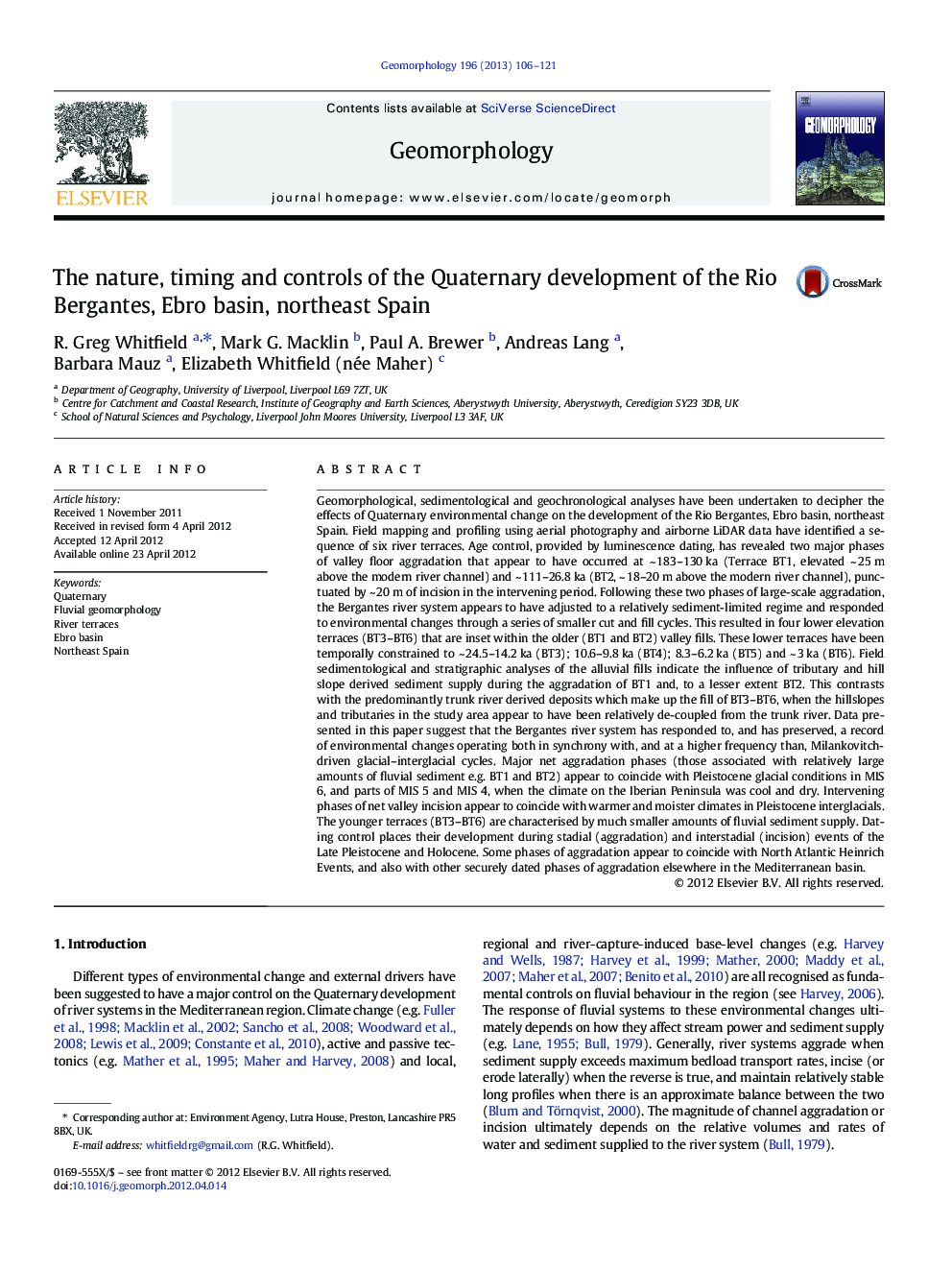| کد مقاله | کد نشریه | سال انتشار | مقاله انگلیسی | نسخه تمام متن |
|---|---|---|---|---|
| 4684856 | 1635453 | 2013 | 16 صفحه PDF | دانلود رایگان |
Geomorphological, sedimentological and geochronological analyses have been undertaken to decipher the effects of Quaternary environmental change on the development of the Rio Bergantes, Ebro basin, northeast Spain. Field mapping and profiling using aerial photography and airborne LiDAR data have identified a sequence of six river terraces. Age control, provided by luminescence dating, has revealed two major phases of valley floor aggradation that appear to have occurred at ~ 183–130 ka (Terrace BT1, elevated ~ 25 m above the modern river channel) and ~ 111–26.8 ka (BT2, ~ 18–20 m above the modern river channel), punctuated by ~ 20 m of incision in the intervening period. Following these two phases of large-scale aggradation, the Bergantes river system appears to have adjusted to a relatively sediment-limited regime and responded to environmental changes through a series of smaller cut and fill cycles. This resulted in four lower elevation terraces (BT3–BT6) that are inset within the older (BT1 and BT2) valley fills. These lower terraces have been temporally constrained to ~ 24.5–14.2 ka (BT3); 10.6–9.8 ka (BT4); 8.3–6.2 ka (BT5) and ~ 3 ka (BT6). Field sedimentological and stratigraphic analyses of the alluvial fills indicate the influence of tributary and hill slope derived sediment supply during the aggradation of BT1 and, to a lesser extent BT2. This contrasts with the predominantly trunk river derived deposits which make up the fill of BT3–BT6, when the hillslopes and tributaries in the study area appear to have been relatively de-coupled from the trunk river. Data presented in this paper suggest that the Bergantes river system has responded to, and has preserved, a record of environmental changes operating both in synchrony with, and at a higher frequency than, Milankovitch-driven glacial–interglacial cycles. Major net aggradation phases (those associated with relatively large amounts of fluvial sediment e.g. BT1 and BT2) appear to coincide with Pleistocene glacial conditions in MIS 6, and parts of MIS 5 and MIS 4, when the climate on the Iberian Peninsula was cool and dry. Intervening phases of net valley incision appear to coincide with warmer and moister climates in Pleistocene interglacials. The younger terraces (BT3–BT6) are characterised by much smaller amounts of fluvial sediment supply. Dating control places their development during stadial (aggradation) and interstadial (incision) events of the Late Pleistocene and Holocene. Some phases of aggradation appear to coincide with North Atlantic Heinrich Events, and also with other securely dated phases of aggradation elsewhere in the Mediterranean basin.
► Orbitally- and sub-orbitally induced fluvial response to climate change
► Sensitivity of the Bergantes catchment to climate-related vegetation changes
► Duration of climatic change has influenced the development of the fluvial sequence
Journal: Geomorphology - Volume 196, 15 August 2013, Pages 106–121
